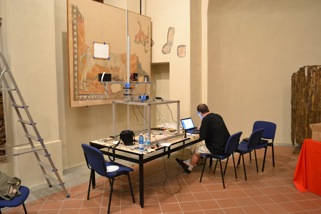Headwall has signed a consulting agreement with cultural heritage imaging professional Dr. Gregory Bearman to introduce hyperspectral imaging to historical preservation experts worldwide.
Hyperspectral imaging technology will prove extremely useful since it is non-invasive and can provide information unobtainable by any other means.

"Our hyperspectral imaging systems cover the range from 380nm all the way up to 2500nm and beyond," said Headwall CEO David Bannon. Imaging in the visible/near-infrared (VNIR, 380-1000nm) and especially the shortwave infrared (SWIR, 950-2500nm) spectral range (chemical imaging), preservation and conservation experts will be able to collect a vast array of chemical information with respect to pigments, substrates, materials, and unseen features." Imaging, as compared to widely available point methods, provides the ability to examine larger areas and heterogeneous objects," said Dr. Bearman.
"Information about ancient documents, artifacts, and paintings not only broadens our overall historical knowledge, but also helps preservation experts carry out their valuable work," said Bannon. Quantitative imaging in the VNIR and SWIR can provide a way to measure and monitor changes in cultural heritage objects over time, a constant struggle for conservators. Such approaches are applicable not just to objects such as art and texts but also to historical buildings and sites, archeological excavations and built heritage in general.
Dr. Bearman's experience applying hyperspectral imaging within the field of cultural and historical preservation is unequaled. He is a pioneer in applying modern imaging to cultural heritage, as the first to build a compact, simple to use imaging system to bring difficult fragments of the Dead Sea Scrolls to light. As a consultant to the Israel Antiquities Authority (IAA) for more than 20 years, he designed the imaging protocol for the massive imaging and conservation monitoring project now underway, wherein the IAA has created a web-based library comprising its entire corpus of Dead Sea Scrolls.
More recently, he has focused on developing quantitative methods and tools to use a variety of imaging modes to measure and monitor changes in cultural heritage over time. "The key to advancing the science of spectral imaging in this community is to extract precise spectral and chemical information using non-invasive technology and to the exacting safety standards to which conservators adhere," said Dr. Bearman. "Headwall's VNIR and SWIR sensors return spectral and chemical data at extremely high levels of fidelity, which is what preservation experts need," he concluded.
The consulting work done between Headwall and Dr. Bearman will be on a global scale, including museums, libraries, built heritage and university collections.